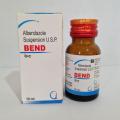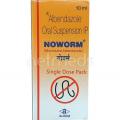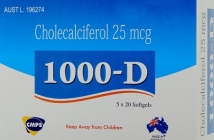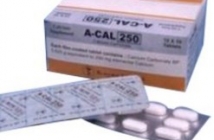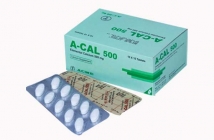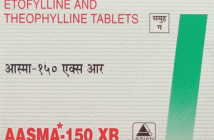Home / Categories / ABEN SUSP.
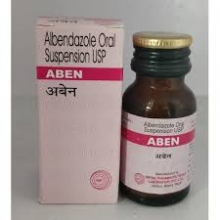
ABEN SUSP.
(1)
Composition:
ALBENDAZOLE-200MG/5ML-EACH PH/10ML
Group Name:
ANTI-HELMINTHIC DRUGS
Manufacturer:
NEPAL PHARMACEUTICAL LAB LTD.
Rs 16.74 / PH
Rs 18.00
7% off
Product Details
Class: Anthelmintic, Benzimidazole
Pharmacology
Mechanism of Action : Albendazole is a anthelmintic that causes parasitic death by binding to colchine-sensitive site of beta tubulin inhibiting their polymerization into microtubles.
Pharmacokinetics:
Absorption: <5%; may increase up to 4-5 times with a fatty meal
Distribution: Well inside hydatid cysts & CSF
Protein Bound: 70%
Metabolism: Hepatic; extensive first-pass effect; pathways include rapid sulfoxidation (major), hydrolysis, & oxidation
Half-life: 8-12 hr
Peak Plasma Time: 2-5 hr
Excretion: urine (<1% as active metabolite); feces
Dosage Forms & Strengths
tablet 200mg
-
Neurocysticercosis (Taenia Solium Tapeworm)
>60 kg: 400 mg PO BID x 8-30 days
<60 kg: 15 mg/kg/day divided BID PO x 8-30 days; not to exceed 800 mg/day
-
Hydatid (Echinococcus Tapeworm)
>60 kg: 400 mg PO BID x 28 days, THEN 14 drug-free days x 3 cycles
<60 kg: 15 mg/kg/day divided BID PO, no more than 800 mg/day x 28 days, THEN 14 drug-free days x 3 cycles
-
Ancylostoma, Ascariasis, Hookworm, Trichostrongylus
400 mg PO once
-
Capillariasis
400 mg PO qDay x10 days
-
Larva Migrans, Cutaneous & Trichuriasis
400 mg PO qDay x 3 days
-
Larva Migrans, Visceral
400 mg PO BID x 5 days
-
Enterobius (Pinworm)
400 mg PO once, repeat in 2 weeks
-
Fluke (Clonorchis Sinensis)
10 mg/kg PO qDay x7 days
-
Gnathostomiasis, Microsporidiosis
400 mg BID x 21 days
Administration :
-
Administer with food.
-
Oral tablets may be crushed or chewed and swallowed with water.
Monitor:
-
Fecal specimens; 3 weeks after treatment.
-
CBC (at the beginning of each treatment cycle and every 2 weeks during treatment.
-
LFTs (transaminases)
Adverse Effects
>10%
Headache
-
Neurocysticercosis (11%)
-
Hydatid disease (1.3%)
Abnormal LFT
-
Hydatid disease (15.6%)
-
Neurocysticercosis (<1%)
1-10%
Abdominal pain
-
Hydatid disease (6%)
Nausea/vomiting
-
Hydatid disease (3.7%)
-
Neurocysticercosis (6.2%)
Dizziness/vertigo
-
Hydatid disease (1.2%)
-
Neurocysticercosis (<1%)
Increased intracranial pressure
-
Neurocysticercosis (1%)
Meningeal signs
-
Neurocysticercosis (1%)
Alopecia (reversible)
-
Hydatid disease (1.6%)
-
Neurocysticercosis (<1%)
Fever
-
Hydatid disease (1%)
<1% (selected)
Rash
Urticaria
Agranulocytosis
Aplastic anemia
Bone marrow suppression
Granulocytopenia
Pancytopenia
Thrombocytopenia
Hepatitis
Acute liver failure
Acute renal failure
Clinical Teaching:
-
Advice female patient to avoid pregency during treatment and for one month after discontinuation.
-
Warm patient to report symptoms of acute liver failure or hepatitis.
-
Side effect may include; abdominal pain, nausea, vomiting, alopecia, fever, dizziness, headache, or vertigo.
-
Instruct patient to take drug with food

